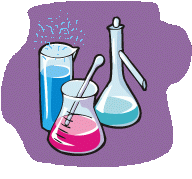


Description of experiment
Below follows a plain text transcript of the selected experiment.
![]()
Needed compounds:
-----------------
sodium sulfide : Na2S . 3H2O
sodium bromide : NaBr
hydrochloric acid : HCl
potassium chlorate : KClO3
Class:
------
elem=Cl,Br,S
redox
Summary:
--------
Potassium chlorate is able to liberate bromine from a bromide. Reaction
with sodium sulfide of the bromine shows formation of fumes/smoke.
Description:
------------
Add some KClO3 to dilute hydrochloric acid (5% by weight): The liquid
turns pale green, smell of chlorine. No gas bubbles at the crystals of
KClO3.
Add solid NaBr: The NaBr dissolves, the liquid turns yellow.
Heating to appr. 60 C: Liquid turns yellow/orange, some bromine escapes
from the liquid. The air above the liquid turns pale brown.
Quickly cool down the liquid, by keeping the test tube under a running
water tap: The color of the liquid becomes more intense, the air above
the liquid becomes colorless again.
Add some solid Na2S: The liquid immediately becomes colorless and slightly
milky. The sodium sulfide, which sticks to the glass, is surrounded by a
little cloud of fume or smoke. The air above the liquid becomes smoky. The
color of the smoke is white. The sodium sulfide, which falls into the
liquid quickly dissolves. It dissolves much more quickly than Na2S usually
does in plain water.
![]()